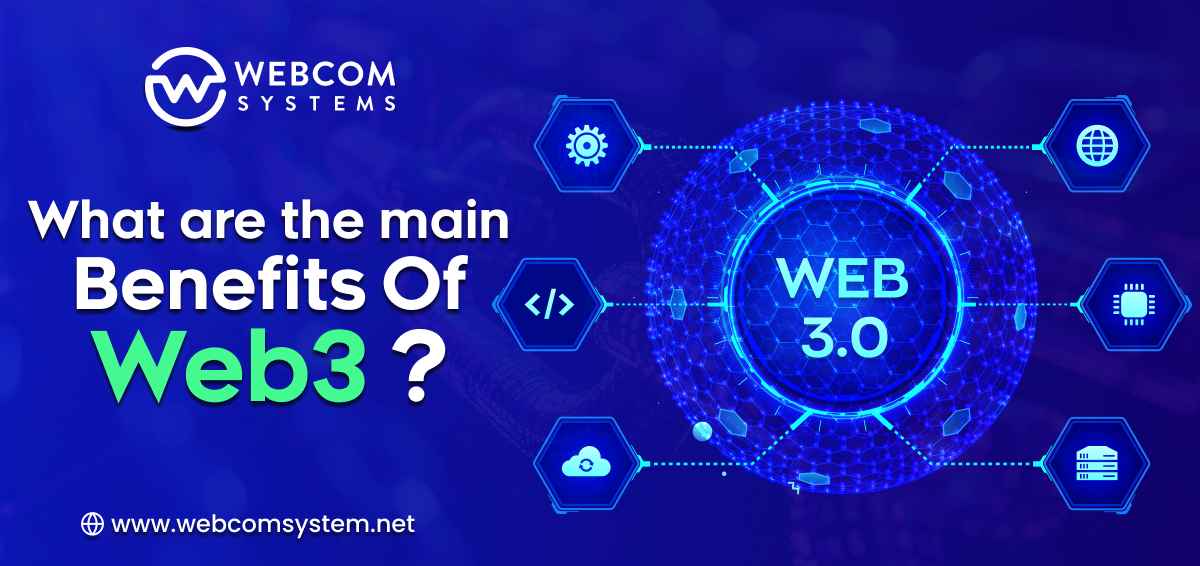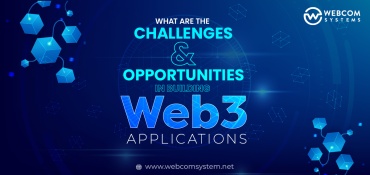The internet is evolving at an incredible pace, but it’s more than just the websites you browse or applications you use on your phone. It’s the underlying technology that’s changing the way we interact with the web. In the last few years, a new development has taken the digital world by storm: Web3. It is a concept coined by renowned computer scientist Gavin Wood and changing the ways we connect and experience the web, moving beyond the limitations of traditional models. To understand it better, let’s discuss what actually is Web 3, how it is incepted, and Web3 development benefits.
Evolution Of WWW To Web3
The concept of Web3 didn’t come from thin air. It covered the long journey that started from its primitive and foremost version, WWW, or Web 1.0. Tim Berners-Lee, a British scientist, gave birth to the World Wide Web (WWW) in 1989. It was developed with the goal of sharing information in an automated manner between scientists from various institutes around the world. However, soon it found ways to serve other sectors as well. Web 1.0 included just the static pages, which used to provide specific information or carry out some transactions.
Where Web 1.0 offered a one-way interaction pathway, Web 2.0 or Web2 changed it all. It allows the development of user-generated content and brings new opportunities for collaboration and interaction. Web 2.0 is the main reason behind the onset and rise of e-commerce and social media platforms. Users can create and publish their content on the internet to share with the audience and even receive their feedback.
However, there is a great setback to Web 2.0, and that is the centralisation of information. Moreover, it suffers from issues like data breaches, internet privacy, and much more. Thus, it generated the need to develop something better, and that’s how Web 3.0 came into the picture.
What is Web3?
Web3, or Web 3.0, is a third-generation Internet, which is a decentralised version of the internet. It includes a set of trends and technological approaches that provide a secure, transparent, and user-centric online experience. It is powered by key technologies, including blockchain, smart contracts, cryptocurrency, decentralized applications (dApps), and more.
Where Web2 has centralized servers and databases, Web3 has a decentralised network to record and store data, transactions, and interactions.
Basic Characteristics of Web 3.0
There are several unique characteristics that define Web3:
Decentralized network
Web3 provides a decentralised ecosystem that reduces the need to rely on centralized authorities or some other intermediary. All the concerned parties get complete control over data ownership, privacy, and secure online interactions.
Blockchain-Based
Web 3.0 is based on blockchain technology, which provides the decentralization feature. It generates an immutable, transparent, and tamper-proof distributed ledger of all transactions, which are further cryptographically secured.
Smart Contract Services
Web 3.0 enables smart contracts that allow automatic and secure transactions, agreements, and interactions.
Transparency
Blockchain technology provides Web3 users with an unprecedented level of transparency. All transactions are carried out through small contracts that are subject to the conditions reviewed and agreed upon by the parties involved.
User Control
Due to the decentralised feature of Web 3.0, all the participating parties get data control, secured by private key and public key cryptography.
Cryptocurrency Enabled
Unlike Web 2.0, where e-commerce relied on government-backed currency and its interference, Web 3.0 supports crypto. Thus, cryptocurrency can be used to conduct secured and independent transactions for products and services.
AI, ML, and Metaverse Integration
Web 3.0 incorporates Artificial Intelligence (AI) and Machine Learning (ML) to provide a more responsive, personalized, and engaging Internet experience. Additionally, it is converging with the metaverse, creating spaces that blur the lines between the physical and digital worlds.
7 Main Web3 Development Benefits
Web3 offers a wide range of benefits, from enhanced security to bringing transparency in operations and presenting new opportunities. Let’s explore some of the most significant Web3 development benefits:
- Increased Security: As Web3 works on blockchain technology, it transfers its security features and makes it much more secure than all the previous versions of Web. Blockchain uses cryptography, a cybersecurity practice that protects all confidential information from hackers. As there is no single point of access, there is no single point of failure as well. It reduces the chances of data violation or system breach, cultivating trust and security.
- Greater Privacy: There was a major concern about Web2 under which major companies were accused of collecting and selling vast amounts of user data for their own benefit. However, Web3 provides decentralised control over shared information; thus, they can decide with whom their information is shared and avoid unauthorized access. It eventually led to a more private and secure online experience than Web2.
- Ownership and Control Over Assets: Not just cryptocurrency, Web3 provides easy access to modern digital assets such as security tokens, NFTs, and other digital tokens. Web3 can create an environment to trade, sell, or transfer ownership of digital art, virtual real estate, or anything. However, the best part is that all of this is possible without any need to rely on third-party platforms.
- Efficient Searching and Information Linking: In Web3, search results are more relevant to user queries. Unlike Web2 search engines that often display popular pages randomly, searching for information in Web3 is much more precise and efficient. This improved accuracy is largely due to the semantic web nature of Web3, which enhances access to and connectivity with online data. As a result, users save time and effort when finding the information they seek.
- No Intermediaries: The Web3 ecosystem is self-sufficient and does not require the involvement of third parties, such as banks or brokers. This is made possible through smart contracts, which automate agreements and transactions. As a result, Web3 speeds up processes and reduces fees and costs.
- New Economic Opportunities: Web3 offers economic opportunities by presenting whole new business models backed by its advanced technologies. For example, decentralized finance (DeFi) apps provide access to crypto assets, allowing purchasing, selling, and ownership without a bank or financial institution. Companies can independently operate as decentralized autonomous organizations (DAOs), empowering them to democratize financial systems.
- Interoperability: Web3 encourages interoperability between applications to offer a more unified and interconnected environment. Interoperability is accessed in Web3 due to the use of smart contracts, standardization protocols, and cross-chain bridges for data transfer between various platforms. Thus, different blockchains connect and share information without any issues.
Conclusion
Web3 represents a significant advancement over Web 2.0. Web3 Development benefits all the industries by offering decentralisation, transparency, and enhanced security in their operations. Although Web3 currently faces scaling issues, progress is being made rapidly. If you want to leverage the benefits of Web3, consider partnering with Webcom Systems, India’s leading Web3 development company. Whether you’re interested in integrating blockchain technology, smart contracts, or decentralised applications into your business operations, we can assist you. Contact us today to discuss how we can implement Web3 solutions to help you excel in your industry.
Recommended Read: What Is Web3 Gaming?





